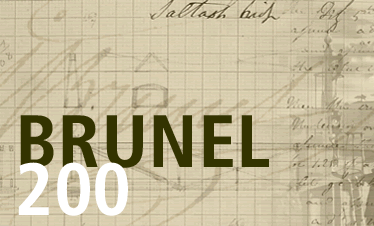
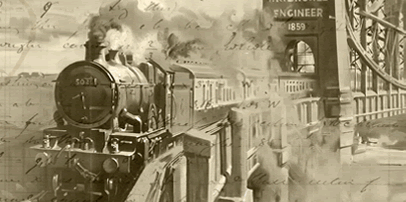
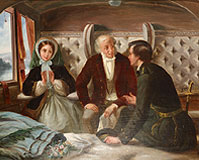
Nineteenth-century copy of First
Class – The Meeting by Solomon
(Private collection)
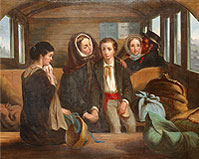
Nineteenth-century copy of Second
Class – The Parting by
Solomon (Private collection)
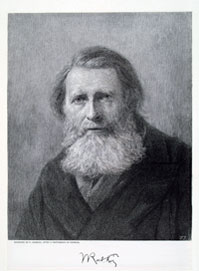
Portrait of Ruskin (University of Bristol)
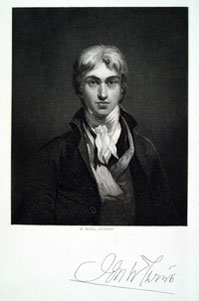
Portrait of Turner (University of Bristol)






For the artist, industrialisation provided new subjects to be captured. In his book Civilisation, Kenneth Clark writes:
The early pictures of heavy industry are optimistic. Even the workers didn’t object to it because it was hellish but because they were afraid that machinery would put them out of work. The only people who saw through industrialism in those early days were the poets... It took a longish time – over twenty years – before ordinary men began to see what a monster had been created.
Some of the most vivid depictions of the often spectacular new industrial landscapes were by Joseph Wright (1734-1797). Wright was a Derbyshire artist steeped in the accomplishments of the British Enlightenment represented by the likes of Erasmus Darwin (1731-1802), Josiah Wedgewood (1730-1792) and Richard Arkwright (1732-1792). Among his works, he produced a series of evocative paintings between 1771 and 1773 showing night scenes at iron forges.
J M W Turner (1775-1851) took an early interest in painting industrial scenes, including foundries, and he seemed to particularly enjoy the possibilities offered by steamships, being a regular visitor to Margate by steamer. Curator James Hamilton sees in Turner’s famous painting Fighting Temeraire (1839):
… the classic image of the painful but inevitable change in early-nineteenth century shipping from sail to steam… gives equal prominence both to sail and to steam, and casts both ships in heroic roles – the large, slow, quiet, pale wooden ghost is tugged to the breakers by a noisy little nippy iron workhorse with another job to do tomorrow. Times change; life moves on.
John Ruskin (1819-1900) and other critics interpreted Turner’s steamships quite differently, seeing the paintings as being essentially pessimistic in mood and a reflection of the ugliness of the modern age. This is perhaps indicative of their own viewpoint: Turner’s opinion remains ambivalent.
The railway provided a particularly fruitful backdrop for Victorian artists. In their social history of the railway station, Jeffrey Richards and John M MacKenzie wrote:
The Victorians equated the railways with progress and civilization. Their coming was hymned in art and literature on a scale of imagination and power which the steam train’s unromantic supplanter, the motor car, wholly failed to inspire.
The new opportunities for social encounters offered by the railway can be seen, for example, in Abraham Solomon’s First Class – The Meeting and Second Class – The Parting (1855). Such social encounters led to a new trend within art, that of social mapping, and several large paintings were produced reflecting the possibilities – and dangers – of such public spaces, including William Buss’ The Crowd and Samuel Coleman’s St James’ Fair. Of particular relevance to the work of Brunel, William Powell Frith’s The Railway Station (1862) depicts a busy scene at Paddington Station, showing the breadth of society who would board a Great Western Railway express. The GWR was also the subject of a major work by Turner – Rain, Steam and Speed (1844) – which shows a steam engine passing over the Maidenhead Bridge in a violent storm. In the words of Anthony Bailey, the painting:
… flaunted the power abroad in the land: steam harnessed with rail by man, and shown in the natural circumstances of a showery day… And below, in Old Masterish calm, some female figures in Claudean costume stand at the river’s edge.
With the new work ethic, labour came to be interpreted as an indicator of personal identity and national culture. This was the subject of Ford Maddox Brown’s Work (1852-65) now on view in the Manchester City Art Gallery. Kenneth Clark describes the painting as showing heroically strong navvies looked on by ‘the idlers, elegant and fashionable, furtive and destitute, or merely naughty’.
New inventions also shaped the way that artists could work. In France, the Impressionists benefited from the introduction of oils in tubes and lightweight easels, which enabled them to paint direct from nature. A number of these artists fled to Britain during the uprisings in Paris. One of these was Camille Pissarro (1830-1903) who included one of Brunel’s water towers in his painting Upper Norwood, Crystal Palace, London (1870).
Photography had been developed from the 1830s. The early photographic experiments of Joseph Nicephore and Louis Jacques Mande Daguerre, and the Englishman William Henry Fox Talbot, often using translucent objects like leaves, led to the discovery of two different negative processes: the daguerreotype and the collotype. The late 1840s saw the formation of official photographic societies and the Great Exhibition of 1851 inspired many to take up the hobby. Photography provided a cheaper – and hence more accessible – alternative to traditional portrait paintings and, through the work of Britain’s first war photographer, Roger Fenton, became an invaluable tool for recording world events. By the 1880s, simple box cameras were produced and the world of amateur photography grew rapidly. In the early 1840s Talbot photographed Brunel’s Hungerford Suspension Bridge in London and the ss Great Britain. Robert Howlett, who photographed Brunel at the ss Great Eastern standing before the chains, died at the age of 27 through exposure to hazardous chemicals then used for developing pictures.
As well as providing new subject matters and new techniques, industrialisation also contributed to a widening of access to visual art. Until the nineteenth century, fine art had been largely an aristocratic interest with works commissioned for private collections. With the new public galleries and civic buildings funded through industrial wealth, and the readily available illustrated magazines and mass-produced prints, art became accessible to the wider population. Particularly popular were narrative paintings, often with a sentimental or moral content.
Moral and narrative paintings were not a new phenomenon. William Hogarth produced a series entitled Harlots Progress in the early eighteenth century, for example, which depicted the downfall of a country girl through the seduction of the big city. However, with industrialisation, movement between rural areas and the city increased dramatically, leading to increasing fears of the immorality of city life. Depictions of leisure pursuits such as visiting pleasure gardens were often painted, focusing on their dangers and promiscuous nature. This is particularly clear in Phoebus Levin’s The Dancing Platform at Cremorne Gardens (1864). With growing concerns about females being led astray, paintings of fallen women were popular. One of the most famous is the series Past and Present (1850s) created by Augustus Egg, who was greatly influenced by Hogarth’s earlier work. Similar themes can be found in Richard Redgrave’s The False Lover (1844) and Dante Gabriel Rossetti’s Found (1853-4).
The narrative paintings did also offer hope. William Holman Hunt’s The Awakening Conscience (1853-6) allows the woman to recognise the error of her ways in time to change her life, for example. Women were also shown positively as dedicated workers. In Jane Bowkett’s Preparing Tea a woman’s dedication to her husband is celebrated and in Anna Blunden’s For Only One Short Hour – The Song of the Shirt the female only allows herself to take a break from her hard work to pray. Moral paintings also highlighted the need for – and rewards of – charity. W A Atkins’ The Upset Flower Cart (1862), for example, depicts a father teaching his daughter to give money to a distressed poor person.
